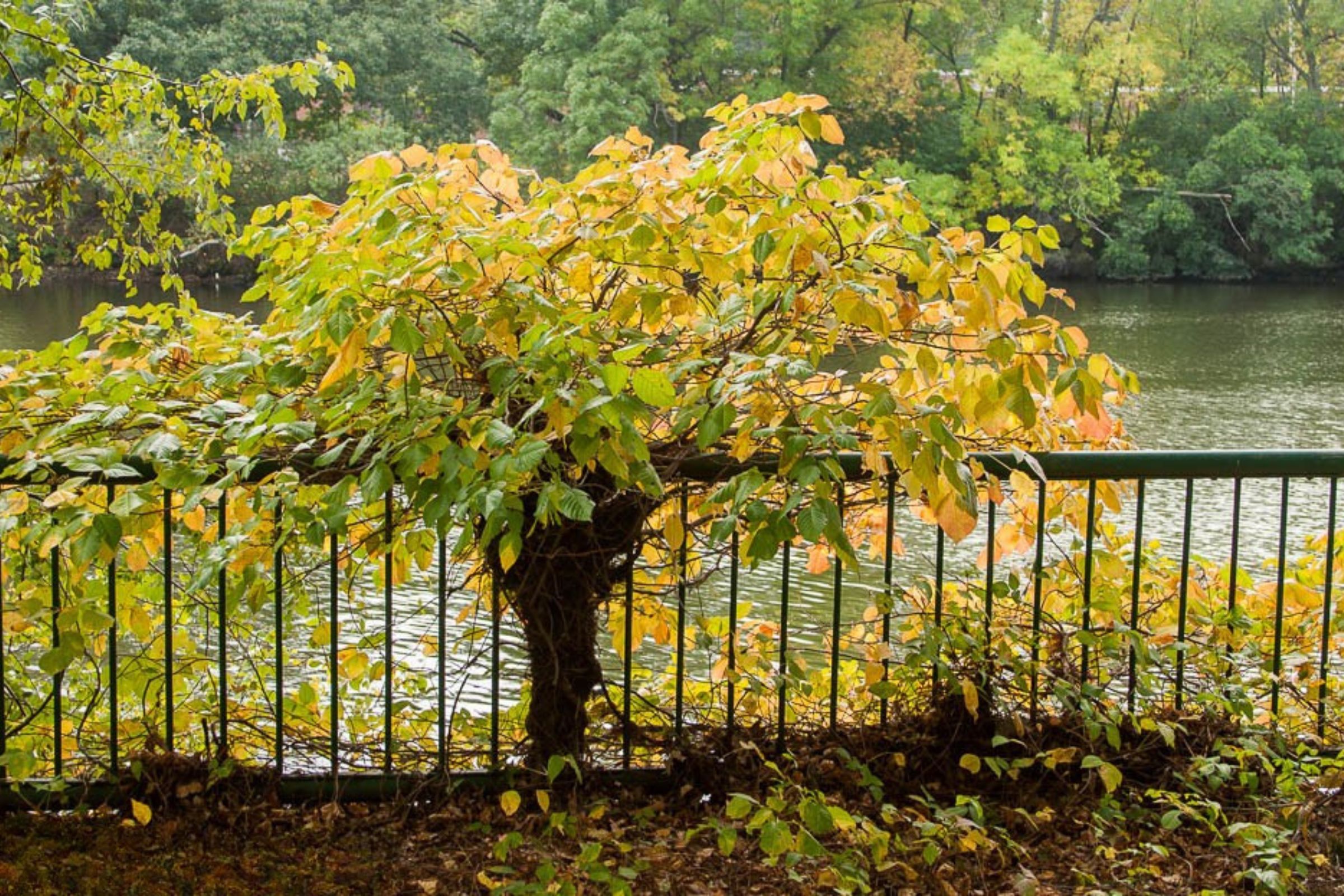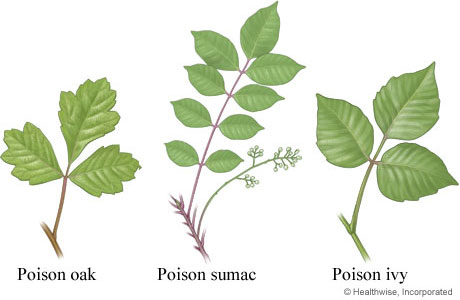Table of Contents
- Maintenance & Landscaping Areas
- Educational & Recreational Spaces
- Seasonal Risk Patterns
- Poison Ivy Recognition
- Poison Oak & Sumac Characteristics
- Personal Protective Equipment Requirements
- Pre-Contact Barrier Protection
- Work Practice Controls & Campus Management
- Equipment Decontamination Procedures
- Critical First Aid Measures
- Clothing & Equipment Handling
- Medical Evaluation Guidelines
- Recognizing Poison Plant Reactions
- Treatment Options & Management
- Employee Education & Training Components
- Documentation & Workers Compensation Integration
- Professional Resources & Support Services
Related Articles
Comprehensive Poison Ivy, Oak & Sumac Prevention Guide For Massachusetts Independent Schools & Cultural Institutions

The Hidden Workplace Hazard Affecting Massachusetts Schools
The American Academy of Dermatology reports about 85 percent of people who come in contact with poison ivy will develop a rash. For Massachusetts independent schools and cultural institutions, this workplace safety challenge can impact employee productivity, generate workers compensation claims, and disrupt educational operations.
According to the CDC’s National Institute for Occupational Safety and Health, exposure to an amount of urushiol less than a grain of salt causes a rash in 80-90 percent of adults. Understanding where poison ivy, oak, and sumac grow on your campus, how employees become exposed, and implementing systematic prevention strategies can dramatically reduce both the frequency and severity of these preventable workplace incidents.
Common Areas of Exposure On Educational & Cultural Institution Grounds
Poison ivy thrives throughout Massachusetts in diverse environments that are integral to school and cultural institution operations. Native to New England, poison ivy is commonly found growing in many types of habitats, including woodland edges, gardens, landscapes, roadsides, and riverbanks. It grows in areas from partial shade to full sun.
Maintenance & Landscaping Areas
Facilities management teams face the highest exposure risks during routine property maintenance activities. Poison ivy commonly establishes itself along building foundations, where it can be easily mistaken for harmless ground cover during weeding or landscaping work. Fence lines and property boundaries provide ideal growing conditions, as these areas often receive minimal maintenance while offering the partial shade and varied moisture conditions that poison plants prefer.
Parking areas and campus perimeters present particular challenges because poison ivy often grows in transition zones between maintained landscapes and natural areas. Equipment storage areas, utility corridors, and service roads frequently harbor poison plant populations that maintenance staff encounter during routine work activities.
Educational & Recreational Spaces
Many independent schools and cultural institutions maintain nature trails, outdoor classrooms, and recreational areas where poison plants naturally occur. Poison ivy can take three possible growth forms, and as a result, you may see it at almost any height, from your toes to above your head. Sometimes it looks like a thick vine, and you’ll see it winding around a tree and climbing high into the air. Sometimes it looks like a bush or a shrub. Other times it will carpet the ground.

Ground/Carpet Growth

Tree Growth

Shrub/Bush Growth
Athletic fields and playground borders often harbor poison ivy in unmaintained edges where the plant can establish without interference. Garden areas and campus landscaping present exposure risks during both professional maintenance and educational gardening activities. Event spaces and gathering areas may have poison plant populations in surrounding landscape areas that pose risks during setup and cleanup activities.
Seasonal Risk Patterns
Understanding seasonal exposure patterns helps institutions implement targeted prevention strategies throughout the year. Spring presents identification challenges as new leaf shoots in spring tend to be droopy and reddish-green in color, making the plants less recognizable. Summer brings peak growth periods when plants reach full size and oil production increases. Fall creates unique risks as the leaflets turn a vivid orange, red and yellow, potentially masking the characteristic three-leaflet pattern that helps with identification.
Winter exposure risks persist because urushiol is active in dead plant material for several years. Dormant vines and stems retain the allergenic oils that cause reactions, meaning year-round caution is necessary during any work involving plant material or areas where poison plants have grown.
Plant Identification: Critical Knowledge For Employee Safety

Poison Ivy Recognition
“Leaflets three, let it be” sums up the most easily identified characteristic of poison ivy – its three leaflets. This reliable identification feature remains consistent across all growth forms and seasons, though seasonal appearance changes can affect recognition.

Poison Ivy in Spring

Poison Ivy in Summer

Poison Ivy in Fall

Poison Ivy in Winter
Key Identifying Features:
- Three leaflets per leaf (middle leaflet larger than side leaflets)
- Central leaflet has a longer stalk than side leaflets
- Leaflets measure 2 to 4 inches in length
- May appear as ground shrub, upright shrub (3 feet), or climbing vine
- Vines have hairy, rope-like stems with aerial roots
- No thorns (distinguishes from similar plants)
Seasonal Appearance Changes:
- Spring: Droopy, reddish-green new leaves
- Summer: Dull or glossy green mature leaves
- Fall: Vivid orange, red, and yellow colors
- Winter: Dormant vines and stems still contain active oils
Poison ivy produces clusters of small yellow-green flowers in the spring that originate in the axils of leaves, then later in the season, small green berries that turn light gray to white. These berries persist through winter and provide important wildlife food, but their presence confirms poison ivy identification.
Poison Oak & Sumac Characteristics
While less common in Massachusetts than poison ivy, poison oak and poison sumac present serious exposure risks in specific environments. Poison oak leaves feature three rounded leaflets with distinctive fuzzy undersides that appear lighter in color than the top surfaces. The plant typically grows as a shrub and may produce white or yellow berries.
Poison sumac thrives in wet, swampy regions in the Northeast, Midwest and parts of the southeast U.S. This plant presents a markedly different appearance with compound leaves featuring seven to thirteen smooth leaflets arranged in pairs along the stem. A full-grown poison sumac tree can get up to 20 feet tall. This tall tree has drooping clusters of pale yellow, cream-colored or green berries. Non-poisonous sumacs have red, upright berries.
Comprehensive Prevention Strategies
Personal Protective Equipment Requirements
Effective prevention begins with appropriate protective equipment for all employees working in areas where poison plant exposure risks exist. Clothing selection significantly impacts protection effectiveness, and systematic equipment requirements provide essential safety barriers.
Required Protective Equipment:
- Long-sleeved shirts and long pants (tightly woven fabrics preferred)
- Waterproof boots and closed-toe shoes
- Waterproof gloves for any plant contact activities
- Eye protection when working around overhead vines
Clothing Selection Guidelines:
- Choose tightly woven fabrics over loose weaves for better barrier protection
- Ensure adequate coverage during varying weather conditions
- Consider disposable coveralls for high-risk activities
- Implement seasonal requirements that maintain protection and employee comfort
Consider seasonal clothing requirements that ensure adequate coverage during varying weather conditions while maintaining employee comfort and work efficiency. All protective equipment should be properly maintained and replaced when damaged to ensure continued effectiveness.
Pre-Contact Barrier Protection
Modern prevention strategies include specialized barrier creams and solutions designed to prevent urushiol oil from adhering to skin surfaces. Barrier skin creams, such as a lotion containing bentoquatam which may offer some protection before contact. Barrier creams should be washed off and reapplied twice a day.
These protective products work by creating barriers that prevent urushiol oil from penetrating skin surfaces, and some formulations include ingredients that help neutralize allergenic oils. There are several products that represent examples of available barrier technologies, though institutions should evaluate options based on their specific operational needs and employee requirements.
Work Practice Controls & Campus Management
Systematic approaches to poison plant management significantly reduce exposure risks across institutional properties. Regular campus surveys help identify problem areas and allow for targeted management before employee exposure incidents occur. Employers can protect their workers from poisonous plants by training them about: Their risk of exposure to poisonous plants. How to identify poisonous plants. How to prevent exposure to poisonous plants. What they should do if they are exposed to poisonous plants.
Professional removal services offer expertise in safe elimination techniques, particularly for large infestations or areas where employee exposure risks are highest. When removal activities are necessary, proper timing during dormant seasons and systematic approaches minimize risks to personnel performing the work.
Equipment Decontamination Procedures
Urushiol can remain active on the surface of objects for up to 5 years. This persistence creates ongoing secondary exposure risks through contaminated tools, equipment, and clothing that require systematic decontamination procedures.
Clean tools with rubbing alcohol (isopropanol or isopropyl alcohol) or soap and lots of water. Wear disposable gloves while cleaning. Establishing designated cleaning areas prevents cross-contamination of clean equipment and facilities. Regular maintenance schedules should include decontamination protocols for equipment used in areas where poison plants may be present.
Immediate Response Protocols For Exposure Incidents
Critical First Aid Measures
The oil begins to be absorbed by the skin within 5-10 minutes so the sooner the better. Quick response following suspected poison plant exposure significantly reduces reaction severity and duration. Understanding proper immediate response procedures can mean the difference between minor discomfort and weeks of painful symptoms.
Immediate Response Steps (First 30 Minutes):
- Remove contaminated clothing without touching affected skin areas
- Rinse affected skin with cool running water (avoid hot water)
- Cleanse skin with rubbing alcohol if available
- Wash thoroughly with dish soap and water using gentle scrubbing motion
- Shower completely, including hair, if extensive exposure occurred
- Apply cool compresses to affected areas
What NOT To Do:
- Don’t use hot water initially (opens pores and increases oil penetration)
- Don’t use soap until after initial alcohol/water rinse
- Don’t scratch or rub affected areas aggressively
- Don’t spread oil to clean skin areas during cleaning
You can’t get rid of poison ivy in one day, but following these immediate steps provides the fastest relief possible. Shower with soap, water, and a washcloth to remove any remaining urushiol. You should vigorously scrub with a washcloth any skin area you think may have contacted the oil as the friction will remove the oil. Be careful to use different washcloths for cleaning the areas affected by the poison ivy and the rest of your body. This helps prevent the spread of the poison ivy oil to other parts of your body.
Clothing & Equipment Handling
Contaminated clothing and equipment require careful handling to prevent secondary exposure to affected employees and coworkers. Wash exposed clothing separately in hot water with detergent. Remove contaminated clothing without allowing contact with unaffected skin areas, and handle items using protective barriers such as disposable gloves. It’s also recommended to run an empty hot water cycle with detergent after washing the contaminated clothing to clean the machine.
Medical Evaluation Guidelines
If you’re performing your duties and notice symptoms such as a rash, redness, blisters, and itching, or if you have trouble breathing because poison ivy is being burned, it’s critical to seek appropriate medical evaluation. Burning these poisonous plants can be very dangerous because the allergens can irritate lungs.
Seek Immediate Medical Attention When:
- Reactions involve extensive skin areas (more than 10% of body surface)
- Swelling affects face, eyes, mouth, nose, or genital areas
- Difficulty breathing or other systemic allergic symptoms develop
- Signs of secondary bacterial infection appear (increased pain, pus, red streaking)
- Fever develops in conjunction with skin reactions
- Employee has known severe allergies to poison plants
Schedule Medical Consultation If:
- Symptoms worsen after 3-4 days of home treatment
- Blisters become infected or show signs of bacterial contamination
- Rash spreads to new areas after initial treatment
- Employee reports severe pain that interferes with sleep or work
- Previous severe reactions suggest need for preventive treatment
Employees should receive medical attention when reactions involve extensive skin areas, affect facial features or mucous membranes, or when systemic symptoms develop. Secondary bacterial infections can occur from scratching and require antibiotic treatment, making medical consultation important when symptoms worsen or persist beyond expected timeframes.
Understanding Symptoms & Treatment Approaches
Recognizing Poison Plant Reactions
Poison ivy symptoms almost always include: redness, swelling, and intense itching at contact sites. Depending on your skin’s sensitivity, a rash may develop within a few hours or a few days after initial contact with urushiol oil. The characteristic linear pattern of many poison plant reactions reflects the way plant materials dragged across skin during contact.
For most people, the stages of poison ivy rash include: initial redness and swelling, followed by the development of fluid-filled blisters, and eventual healing over one to two weeks. It may look like your rash is spreading, but you’re actually developing new rashes on areas of skin that came into contact with urushiol oil.
Treatment Options & Management
Rashes from poisonous plants usually go away on their own within a week or two. In the meantime, poison ivy treatment includes over-the-counter (OTC) medications that can relieve the itchy rash: Topical corticosteroid creams provide effective inflammation reduction when applied early in the reaction course, while oral antihistamines help control systemic allergic responses and provide itch relief.
Your healthcare provider may prescribe a poison ivy rash treatment if it becomes more severe or forms on the mucous membranes of your eyes, nose, mouth or genitals. They may recommend an oral steroid such as prednisone. Severe reactions may require prescription medications including oral corticosteroids to control extensive inflammation and systemic symptoms.
Building Effective Institutional Prevention Programs
Employee Education & Training Components
Comprehensive prevention requires ongoing employee education addressing identification, prevention, and response protocols. Training programs should include visual identification guides featuring seasonal appearance changes, hands-on practice with protective equipment, and scenario-based learning addressing common exposure situations specific to educational and cultural institution environments.
Annual training should cover high-risk locations specific to each campus, proper use of protective equipment and barrier products, emergency response procedures for exposure incidents, and clear reporting protocols for suspected exposure or identified poison plant populations. Regular refresher training helps maintain awareness levels and updates employees on new prevention techniques or institutional policy changes.
Documentation & Workers Compensation Integration
If an employee has to lose time at work due to poison ivy sustained while on the job, he or she may be able to recover lost wages. Additionally, if the poison ivy rash spreads in a way that requires medical treatment, these medical treatment costs can be recovered through a workplace injury claim.
Systematic documentation procedures support effective workers compensation management while demonstrating institutional commitment to employee safety. It’s critical to do the following to first care for your health and second, prepare to file a workers’ compensation claim. Maintain detailed incident reports, medical consultation records, and follow-up monitoring protocols that support appropriate claim processing and cost management.
Professional Resources & Support Services
Establish relationships with local healthcare providers familiar with occupational poison plant exposures and treatment protocols. Occupational medicine specialists offer expertise in workplace exposure prevention and can provide guidance on institutional prevention programs tailored to educational environments.
Consider developing preferred provider relationships for employees requiring medical evaluation following exposure incidents. Professional landscaping services with expertise in poison plant identification and safe removal techniques offer specialized equipment and training that may not be practical for institutional maintenance staff to develop internally.
Massachusetts-Specific Considerations & Resources
Poison oak (Toxicodendron rydbergii) grows mainly west of the Mississippi and it is safe to say we have little to none here in Massachusetts. Poison sumac (Toxicodendron vernix) does occur here but grows primarily in very wet, swampy areas, so it is unlikely that you have any in your yard. This regional information helps Massachusetts institutions focus prevention efforts primarily on poison ivy identification and management.
We are licensed and insured professional poison ivy eradicators serving all of Massachusetts. Professional services are readily available throughout the state for institutions requiring specialized removal or consultation services. Local health departments can provide specific information about recent poison plant exposure incidents and recommended management approaches for your geographic area.
Key Takeaways For Institutional Safety Management
Effective poison plant prevention requires integrated approaches combining employee education, systematic use of protective equipment, clear response protocols, and ongoing campus management. The high likelihood of allergic reactions among exposed employees makes prevention far more cost-effective than treatment and workers compensation claim management.
Regular training, appropriate protective equipment, and systematic campus assessment significantly reduce both exposure incidents and associated costs while demonstrating institutional commitment to employee safety. Most poison plant reactions resolve within one to two weeks with proper treatment, but comprehensive prevention programs provide the most effective protection for educational communities.
The investment in systematic prevention programs pays dividends through reduced claim frequency, improved employee comfort and productivity, and enhanced safety culture that benefits entire educational communities. By understanding plant identification, implementing appropriate protective measures, and maintaining clear response protocols, Massachusetts independent schools and cultural institutions can effectively manage poison plant risks while maintaining the outdoor spaces and activities that enrich educational programming.
For Additional Information: Contact ISCC/FutureComp Loss Control Consultants for guidance on developing poison plant prevention programs specific to your institution’s campus characteristics and operational requirements.
Emergency Medical Attention: Seek immediate medical care for severe allergic reactions, difficulty breathing, or extensive exposure affecting large skin areas or mucous membranes.
NOTE: For institutions interested in exploring commercial barrier and treatment products, the marketplace offers various solutions from specialized manufacturers such as Coretex Ivy-X Pre-Contact Solution and RR Lotion’s poison ivy product line. ISCC provides these links for informational purposes only and does not endorse specific products, vendors, or treatment approaches. Members should conduct their own evaluation of available options, consult with safety professionals, and determine the most appropriate solutions for their specific institutional needs and employee populations.





